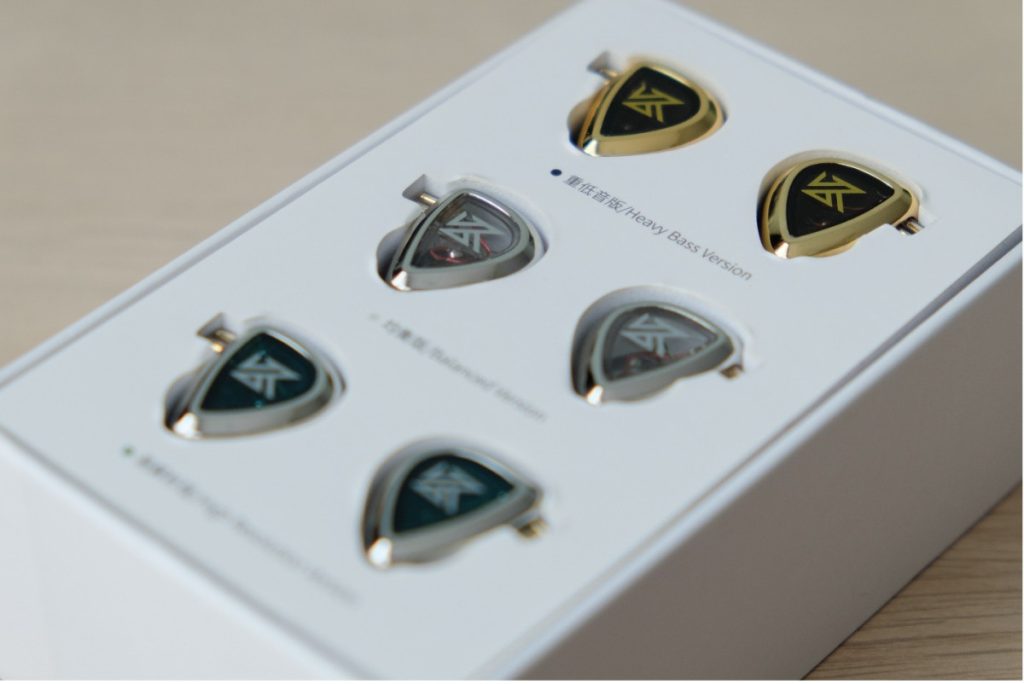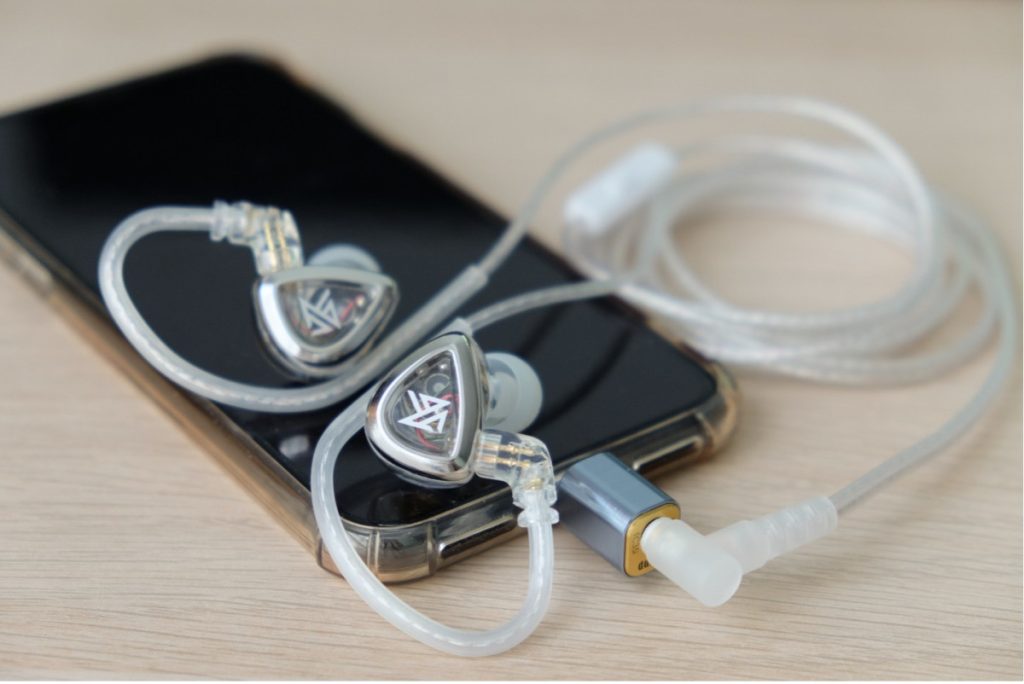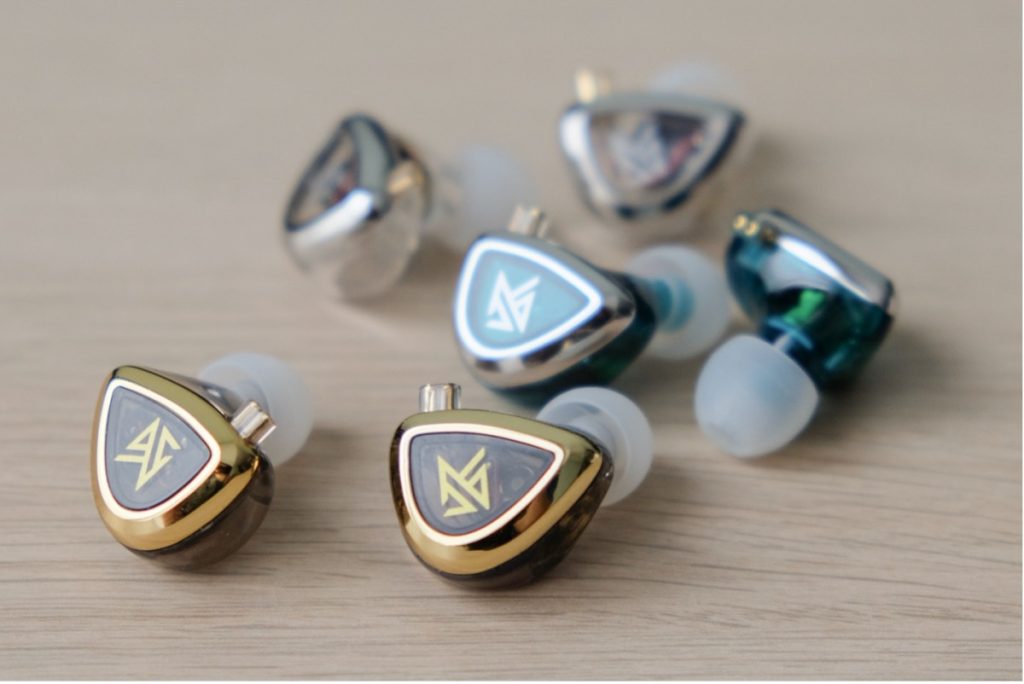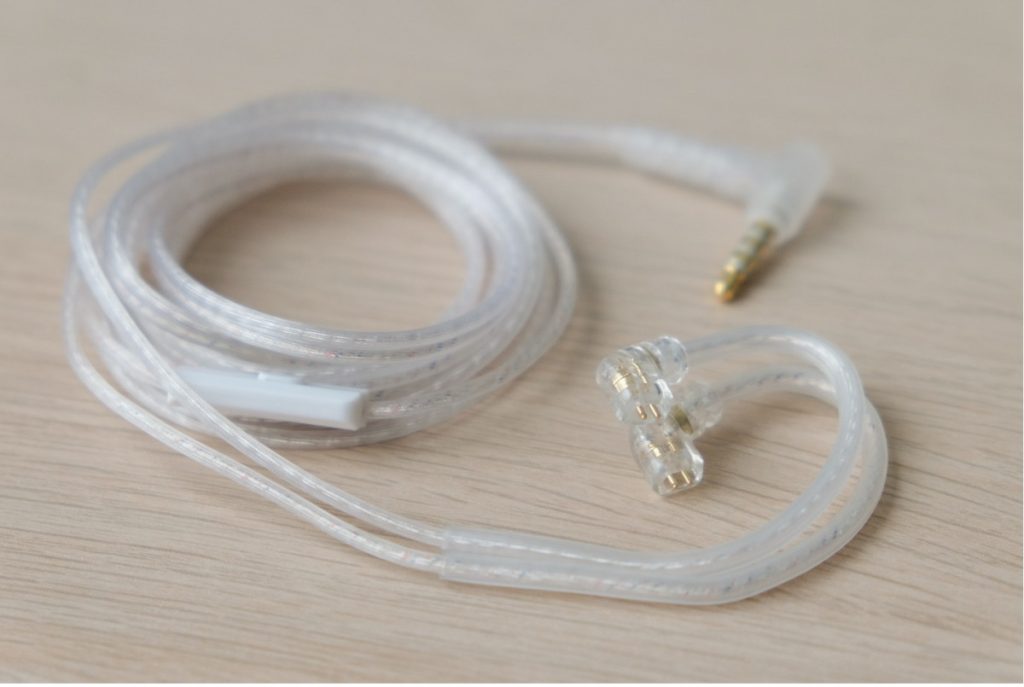Introduction
Picture this scenario, you got your paid from your hard work and you decided to spend on an entry level IEM. You had your debate with your personal finance (your spouse/partner) and finally he/she gave you the green light to purchase but with 1 condition: You are only allowed to buy 1. Familiar with this scenario? Before you start cracking your head by researching which is the best entry level IEM, let me introduce you to the KZ EDA. Before you ask if this is the ultimate entry level IEM, guess what? It comes with 3 pairs of IEMs!

It all started back in 1st of April 2022 when KZ officially announced the EDA that comes with 3 pairs of IEMs with 3 different tunings in their official Facebok page, almost everyone in the audiophile community took it as an April fool’s joke. Little did they know, right on the next day KZ started the pre sales for the EDA and that brings us today, we have it here in our hands. Before diving into further details, we would like to give KZ a big shout out and thanks for sending us the EDA to have a in depth review.
Packaging and Accessories

The box of the EDA seems to be the same sized as most of the other KZ IEMs, but once opened the packaging of the EDA, immediately you will be greeted by the 3 pairs of IEM versions.
Ever heard of cable rolling on an IEM? For those who doesn’t know, cable rolling is basically a process where you swapping out cables on your IEM to get the ideal characteristics for your setup. For KZ however, they had stepped up their game with the EDA. Instead of cable rolling, KZ seems to suggest you to do IEM rolling instead.
Why so you asked? Taking off the top paper tray that holds the IEMs, you will find only 1 IEM cable (came with either with mic or without).
The EDA also comes with silicone tips as well. But instead of the usual 1 pair of each size with the EDA you will get 1 pair of large, 1 pair of small and for some reasons 3 pairs of medium size silicone tips that are already preinstalled on all of the EDA versions unit.
Design
The EDA comes with different color for different version. The heavy bass version is in smoked black plastic, with a splash of gold metal outline on the outer faceplate to give it some extra bling. Both the balanced and high resolution version have a metallic chrome metal-like outline instead. The balanced version gets the clear plastic while the high resolution version gets the teal plastic.

The balanced versions have a metal mesh filter instead of the nylon-ish like material filter on the other 2 versions.
All the EDA versions have near identical build quality. While most of the 35USD-ish priced KZ have metal ear tips nozzle, all the EDA versions are just plastic ear tips nozzle. There are some sharp edges from the plastic mold on the nozzle body as well but it is covered up by the silicone ear tips so it is fine.
The metallic faceplate ring seems to not well glued in place on left side on the balanced version causing some sharp scratchy feeling when in contact.
As mentioned previously, the EDA comes with only 1 0.75mm silver plated cable and it has an ear loop, our version here comes with a mic too. The only complain is the cable ear loop can be quite clampy on my ears, but that is a small issue as normally I would remove the ear loop and that solves it. The 0.75mm dual pin socket on the IEM wasn’t well integrated with the IEM body, those with OCD (including me) may keep trying to shove the 0.75mm connector into the socket deeper thinking that it wasn’t inserted fully.

The plastic case of the EDAs does not have the custom IEM like ear shape, but it still fits snuggly and rather comfortability in my ears.
Despite some of the design flaws on the EDA, with the price of 35USD for 3 pairs of IEMs (11USD on average for each of the version) I guess I’m just being too nitpicking on it.
Retail Price & Where To Get
The KZ EDA is exclusively available for $35.99 – $36.99 on www.kztws.com
Gears used for comparisons
iPhone X | ddHifi C35i 2021 | Fiio uBTR
Song List

Tone and Presentation
All 3 EDA versions have a similar U-shaped sound signature where the mids are slightly recessed, but each of the versions will have a slightly different tuning to give a distinct flavor. With the balanced version as the reference point, the heavy bass version’s bass and highs are elevated giving it a much more fun and excitement presentation with most of the tracks while the high resolution version’s mid-highs are elevated to give some excitement and more analytical presentation, but the lower end retain the similarity from the balanced version.
To my surprise, all of the versions presented most of the frequencies quite naturally, smoothly and clearly, listening to all of these EDA versions even for long period of time is little to none fatiguing at all except for the high resolution version (more details later). All 3 versions not not sound too veiled at all, instruments and vocals are presented upfront with decent clarity, especially with the balanced and high resolution version.
Separation and Timbre
Heavy Bass Version
Most of the instruments are well defined from the mid to higher frequencies. On the lower end though, things may get a bit fuzzy. Most of the time Bass guitar and Bass drum often not well defined, resulted into just some bass rumble when they are played together especially with the same rhythm pattern. There are some colorations on the lower mids resulted some warmer vocal presentation being somewhat unnaturally bass emphasis. For the mid to higher frequencies though, they are pretty much natural.
Balanced Version
Separation between instruments and vocals are much better from the heavy bass version. Compare to the heavy bass version, the Bass guitar and Bass drum has a better definition and separation. Of course, it may not be as well defined as some higher priced IEM, but it is still distinguishable and I could say it performs better than many IEMs in around 35USD price range. Instruments are easily identifiable with the natural timbre which is another great plus.
High Resolution Version
Separation on the high resolution version is done slightly better compared to the balanced version. Most of the instruments like on the balanced version are well defined and easily identifiable. At the pre-chorus build up in “Follow You” track, each of the male vocal’s layering are well defined without any congestion. Overall the timbre is pretty much natural except for the upper mids may presented as a little too shouty.
Soundstage
The soundstage from all of the 3 versions of EDA doesn’t have much to shout about. All of them have a small oval-ish shaped stage, there are not much depth and height from them but for this price tag, I am basically nitpicking on them.
The heavy bass version has slightly wider stage among of all. The bass instruments are placed somewhat closer to the listener due to the higher presence on the lower frequencies. Vocals and most other musical instruments are somewhat in the same line of position while higher frequencies instruments tend to be at the background.
The Balanced version is slightly narrower than the heavy bass version, but it does present a better sense of depth and height. Like the heavy bass version, the instruments and vocal placement seems to be identical. Unlike the heavy bass version, bass instruments don’t stand out which gives a more accurate stage positioning especially with orchestra tracks.
Drivability
I’m glad to report that all of the EDA versions are easily drivable directly straight out from almost any source without any sweat. On my iPhone X with ddHifi TC35i, I am able to listen most tracks at 20-30% volume comfortability. The high resolution version seems to be easiest to drive compare to the other 2. With the same volume, the high resolution appears to be louder.
Bass
Heavy Bass Version
On the heavy bass version, the bass as per mentioned with its name is the heaviest compared to the others. For the price, the lower bass is able to present decently with good rumbles as if there is a mini subwoofer in the IEM. Depending on the tracks, some presented in the way where the details of bass instruments may have difficulty on distinguishing them apart while playing at the same time especially with bassy tracks.
Balanced Version
On the Balanced version however, the bass is lower than the heavy bass version. However, it still does give a decent deep punch and some rumbles with textures while giving a clean and somewhat fun presentation. Instruments presentation on the balanced version are much more well defined as compared to the heavy bass version.
High Resolution Version
The bass on the high resolution version does share many similarities with the balanced version. Sub-bass rumble produces with great texture, bass instruments are well defined and easily distinguishable, the sub-bass decay is present, but most of the time, bass presence is mostly positioned at the mid-back section of the stage.
Mids
Heavy Bass Version
Overall, on the heavy bass version, the mids felt laidback and recessed due to the elevated bass and mid-highs. With less bassy tracks, the mids are presented with decent clarity, with bassy tracks though the bass may overtake and push the mids behind. The lower midrange on the heavy bass is elevated to give extra warmth to the overall sound but some male vocal may have bass emphasis effects. On the upper mids there are some sharpness that give very minor shouty effect especially with certain female vocals.
Balanced Version
Lower mids are much more accurate in my opinion compared to the heavy bass version. It does not produce the bass emphasis effect with male vocals, that being said bass bleed are pretty much almost nonexistent. It may feel less warm than the heavy bass version but it does not feel dry on the mids, it feels much more natural. Even with bassy tracks, the mids from the balanced version is constantly positioned upfront. Higher mids is much smoother compared to the heavy bass version, female vocals like Taylor swift doesn’t feel shouty at the chorus of Enchanted track.
High Resolution Version
Overall, on the whole midrange, everything seems to be much clearer and forward presented compared to the other 2 versions. Like the balanced version, the high resolution version too have less warmth on the midrange compared to the heavy bass version. This IEM seems to has increased upper mids compare to the other 2 version, this resulted to some graininess/shouty effect on some brighter female vocals like Taylor Swift and Hayley Williams. With long session listening, the shouty upper mids may cause some fatigue for those who are sensitive to it.
Highs
Heavy Bass Version
The highs on the heavy bass does shines and sparkles, surprisingly it doesn’t have the typical KZ harshness/sibilance to it. As most of the IEMs in this range often have their highs hidden at the background to hide its flaws, the EDA heavy bass however is slightly more revealing giving the overall sound presentation more energy. On “Take Five” track, every cymbal notes are somewhat crisp but sounded less sparkly and slightly muted than the balanced version, highs decay sounded shorter compared to the balanced version too. On “La Campanella” the triangle and xylophone not well defined at times it may sounded like they are the same instrument, quite similar to many IEMs even around $50 price tag.
Balanced Version
Like the heavy bass version, the balanced version highs overall are smooth (in some cases, even smoother than the heavy bass version) and able to produces a crisp spark with a decent decay. On “Take Five” track, every cymbal notes are crisp and easily distinguishable and it follows with a nice lingering decay. Compared to the heavy bass version, the highs have a more upfront presentation as well. Surprisingly, on “La Campanella” the triangle and xylophone are easily distinguishable.
High Resolution Version
The high resolution version has increased highs compared to the balanced version. Like the balanced version, the high resolution version also produces decent sparks on the highs. With some tracks however, there are some peaks on the highs and it almost borderline near sibilance. Most of the string instruments like acoustic guitar and violin stands up more forward on staging thanks to the extended highs.
Comparisons

KZ X HBB DQ6S
The DQ6S overall has a much laid-back sound signature even compare to all of the EDA versions. Although the DQ6S overall bass is quite extended, it does not have the speed like the EDA heavy bass version. The EDA heavy bass version’s bass is much more forward and aggressive. The highs on the DQ6S are definitely much smoother compared to all of the EDA versions, but the micro details that can be perceived on the EDA balanced and high resolution version is more than the DQ6S.

KZ ZEX Pro
Among the 3 version of EDA, the balanced version came close to the ZEX Pro. However, the ZEX Pro has slightly more sub-bass and wider, deeper sound staging compared to the EDA balanced version, tighter and less bass bleed compared to the EDA heavy bass version. The upper mids of ZEX Pro tends to have some shouty effect like the EDA high resolution version, but slightly better managed. But for the EDA balanced version though the upper mids is way smoother and this is where it beats the ZEX Pro. But for the same price as ZEX Pro you get 3 EDAs, still a good value for the EDA.
Synergy

Fiio uBTR
Being a warm sounding Bluetooth receiver, the Fiio uBTR seems to work best with either the EDA balanced and high resolution version. It will slightly increase the lower mids giving them a lusher overall mids. There is some increment on the sub-bass region as well, it will not offer sub-bass like the heavy bass version but it does add some fun to the overall listening experience. However, the uBTR audio output do have some hissing at the background and the high resolution version seems to able to highlight it even more obvious than the balanced and heavy bass version.
Who is it for?
In my opinion, the KZ EDA is best suited for someone who wanted to begin their journey into the audiophile hobby without having a chance to audition a demo unit. With EDA straight out of the box provided 3 different tuning IEMs, he/she would most likely able to find at least 1 pair that suit them the most. Or perhaps if you are someone who loves to swap IEMs from time to time to get a different sound signature to suit your current mood, this would be something that you can put into consideration.
Final Words
The KZ EDA, 3 differently tuned IEMs in single box with a price tag of USD 35, that makes it an average of USD 12 per IEM, it is no doubt that they do sound much more expensive than it actually is. To be able to offer such audible techicals just a single dynamic driver in an IEM, this just proved that manufacturer could skip the multi drivers gimmick to produce good sounding budget IEMs.
Well of course there is some sacrifice to be made to offer such price, in this case with tis EDA it would be the cheaper build where there is no metal ear tips nozzle, no full metallic face plate and somewhat thinner feeling plastic housing. All in all, the EDA package is still a great offering from KZ, but for those who does not want a package with 3 IEMs, KZ did release their balanced version as a standalone product at 19USD (at the point of this article is written).
Ratings
Tone and presentation : 9 out of 10
Heavy Bass Version : 8 out of 10
Balanced Version : 9 out of 10
High Resolution Version : 9 out of 10
Build and design : 9 out of 10
Heavy Bass Version : 9 out of 10
Balanced Version : 9 out of 10
High Resolution Version : 9 out of 10
Separation and timbre : 8 out of 10
Heavy Bass Version : 7 out of 10
Balanced Version : 9 out of 10
High Resolution Version : 9 out of 10
Soundstage : 8 out of 10
Heavy Bass Version : 9 out of 10
Balanced Version : 8 out of 10
High Resolution Version : 8 out of 10
Bass : 9 out of 10
Heavy Bass Version : 9 out of 10
Balanced Version : 9 out of 10
High Resolution Version : 9 out of 10
Midrange : 8 out of 10
Heavy Bass Version : 8 out of 10
Balanced Version : 9 out of 10
High Resolution Version : 8 out of 10
Highs : 8 out of 10
Heavy Bass Version : 8 out of 10
Balanced Version : 9 out of 10
High Resolution Version : 8 out of 10
Value : 10 out of 10
Heavy Bass Version : 10 out of 10
Balanced Version : 10 out of 10
High Resolution Version : 10 out of 10





